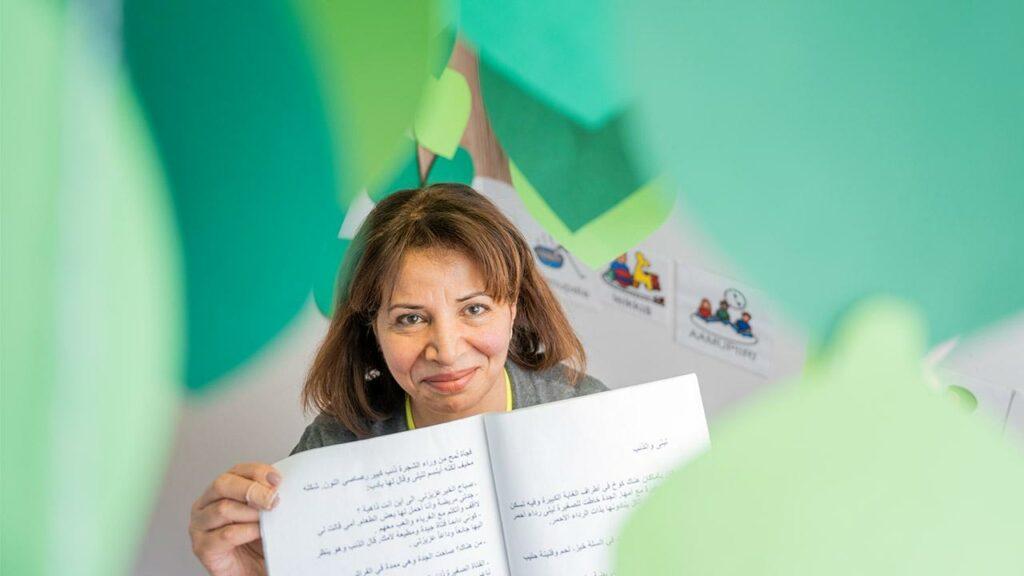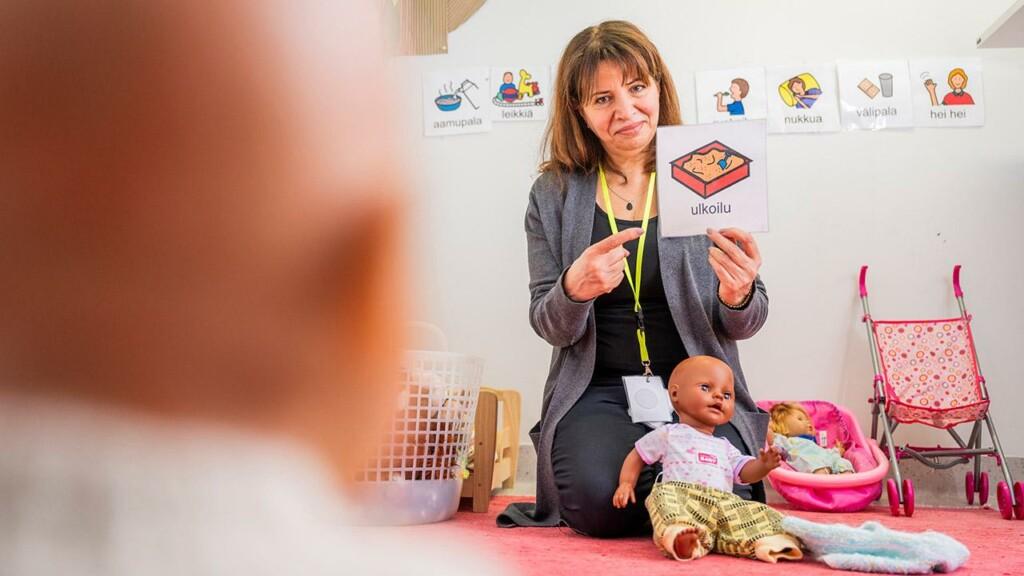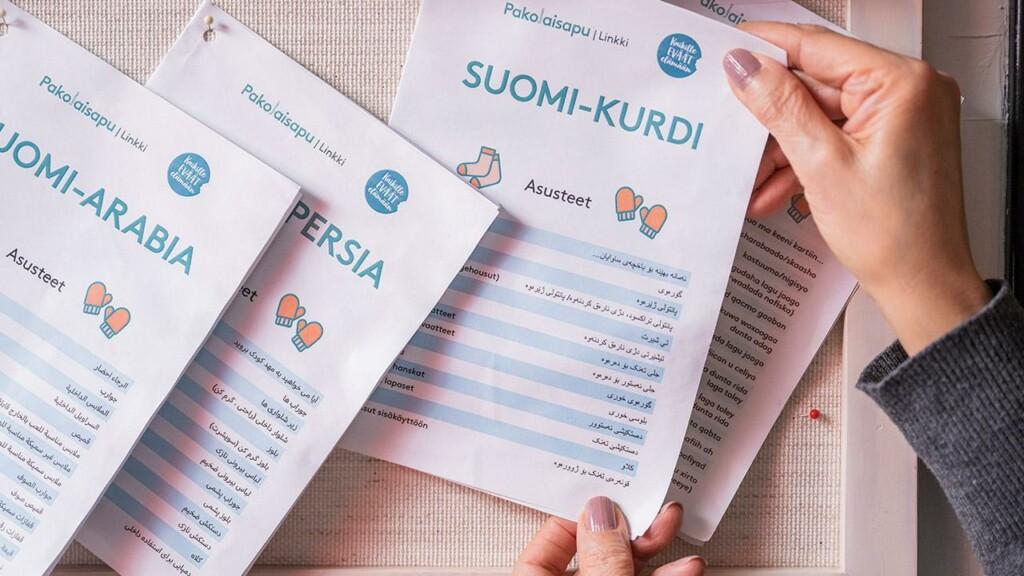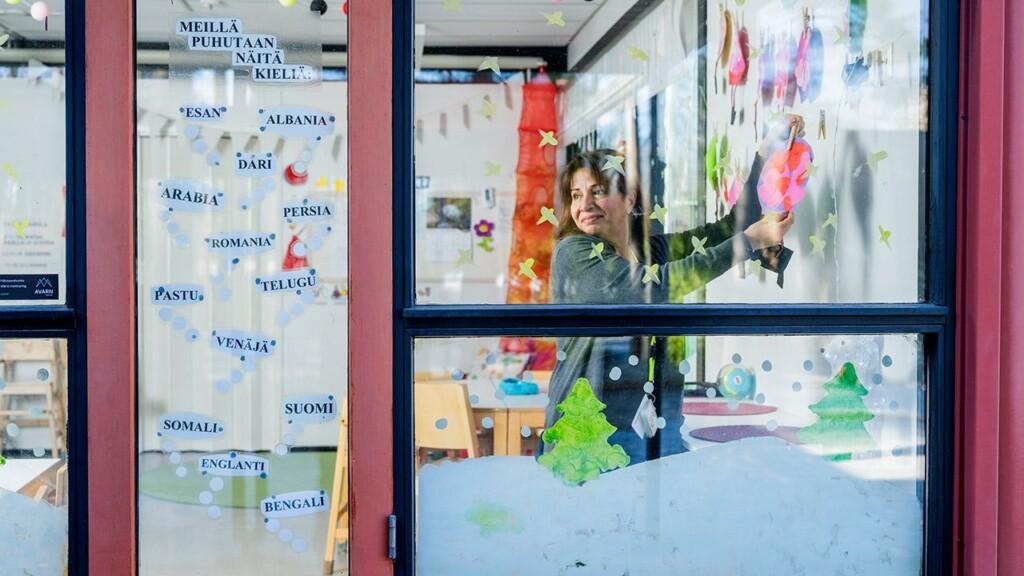When the children have 15 different languages: Childcarer Thamina Jabir tells how children who come from different cultures learn to understand each other

Iraqi-born Thamina Jabir works as a childcarer in the Varissuo district in Turku. She has speciliased in multilingual early childhood education and care, and she is the right person to tell which conceptions about her work are true and false.
Original article written in Finnish by Hanna Kangasniemi Photos: Vesa Tyni Reading time: 2 mins
The number of multilingual children in early childhood education and care is growing rapidly. Because of this, many new good practices have been introduced in this sector. You can read more about them in this article.
The needs of the children and their families get seen in the Piinokankatu daycare centre, which is located in the Varissuo district in Turku. Iraqi-born Thamina Jabir is one of the daycare centre’s employees. She has worked as a childcarer for over 20 years.
Now she tells what statements around this topic are true and false.

1: It’s difficult to understand multilingual children
False: Our children have in total 15 languages, but things work. What’s important is trust and interaction. We support language with key word signing and picture cards that help to understand things, actions and emotions. Multilingual childcarers come to aid when needed. I speak Arabic, and we also have childcarers who speak Russian, Albanian and Bosnian.

2: Work in a multicultural daycare centre is rewarding
True: I had studied statistics in Iraq, but then in Finland I studied early childhood education and care and became a childcarer. I have additional training in multicultural early childhood education and care. It’s rewarding to see how children with an immigrant background grow up and find their place in this country. Sometimes some of them have even come to thank me in the street as grown-ups. Only the pay in this work should be better.
3: Being multilingual has a negative effect on language development
False: 90 per cent of our children have an immigrant background. Early childhood education and care improve both their Finnish and their mother tongue. On Fridays we have Pupukerho (Bunny Club) that is led by an early childhood education and care teacher and a language and culture teacher. The children have an exercise book that they also take home, so that it benefits the parents as well.

4: Groups form easily
True: The children learn to understand each other as they play and sing together. Even if they do not have a common language, they talk with each other happily. We listen together to stories in different languages from a multilingual book service Lukulumo. The children are interested in listening to the stories and hearing new languages.
5: I’m not only a childcarer
True: I act as a cultural bridge between the staff and the families. I help the parents to understand how things are done in a Finnish daycare centre. It can start from such basics as getting a rain overall for outdoor play. I help to find shared education and care principles where different backgrounds are respected.
Thamina Jabir
- Age: 60
- Occupation: Childcarer in early childhood education and care
- Workplace: Piinokankatu daycare centre, Turku